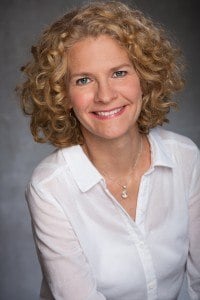Control the chaos and unleash your team's potential with Extensis Connect / Learn More
Control the chaos and unleash your team's potential with Extensis Connect / Learn More

As a company that sells a digital asset management solution, Extensis Portfolio, we help our customers organize their digital assets to realize their full value. For those unaware of Portfolio, and digital asset management solutions generally, it’s not just a ‘new and improved’ file structure—which is something you are very capable to generate on your own. No, Portfolio works by identifying your assets where they live, representing them in a central location for the user, and utilizing AI and your own institutional knowledge to tag them with keywords to make them easier to find and streamline them into your key workflows.
As such, we couldn’t help but notice the trend with Marie Kondo, and her organizational show sweeping Netflix and the U.S. To investigate how Marie Kondo, and ‘sparking joy,’ might be applicable to customers of Extensis Portfolio, we decided to speak with our own organizational consulting expert.
 Suzanne Lehman is a local organizing consultant, and a spouse of one of our Extensis colleagues. She has been a professional organizer in the Portland area for 15 years. In that time, she has worked with both individuals and small businesses to organize for and arrive at the client’s end goal. Below are some of the insights we covered during our discussion of organizing principles, digital asset management, and paths to organizing success.
Suzanne Lehman is a local organizing consultant, and a spouse of one of our Extensis colleagues. She has been a professional organizer in the Portland area for 15 years. In that time, she has worked with both individuals and small businesses to organize for and arrive at the client’s end goal. Below are some of the insights we covered during our discussion of organizing principles, digital asset management, and paths to organizing success.
Thanks so much for speaking with me today, Suzanne. Marie Kondo is the talk of the town these days with regard to self-organizing. But she has a very consumer-oriented approach, correct?
Yes, Marie Kondo is a phenomenon! Almost every home I go into, I see her book “The Life Changing Magic of Tidying Up” on a bookshelf or end table. People are drawn to the KonMari method because it hits organizing on two levels. First, her method acknowledges that people have a personal relationship with their stuff. It speaks directly to the internal life of the client by asking the famous question, “Does this spark joy?” People love this because it helps them connect to themselves as a change agent. Suddenly it is more about them than the stuff! They can make determinations about what to keep based on their relationship to their belongings. And for many people, the question, “Does it spark joy?” can feel friendlier than a more standard criteria professional organizers are trained to suggest, such as: “Have you used it in the last year?” and “Do you see yourself using it in the next year?”
Second, KonMari method provides a plan. It is a plan! Instead of organizing room by room, the method has you sort all belongings by category. The first step is clothes, then books, then paper, then komono or everything else. Most of my clients have tried to organize their spaces for years, but have become quickly overwhelmed because they have no plan. They dive in and stop when obstacles arise that discourage them.
The garage is a perfect example. It is easy to get overwhelmed when there is a high density of stuff, lots of decisions to make, and no plan to see the project through. It is more complex than it appears on the surface. What to do with the broken running stroller? The snow tires from a car you no longer own? Grandpa’s antique tools? How about the boxes of framed family photos? Those things get left in a heap. It is exhausting for people. That is when they call me. I provide a plan, hands-on support and resources to see the project through to its fully organized finish.
Those questions you mentioned seems like very functional questions, questions that businesses or organizations might ask themselves as they seek to organize their assets. How would you describe the difference between an individual approach and an organizations’ approach?
Business organizing is different on a number of levels. For instance, in the KonMari method, there is a high emphasis on letting go of stuff in order to live more minimally with only those things we love. In business, we're not looking to get rid of or eliminate assets. It's more a matter of making the assets accessible and easily searchable. Eliminating or letting go of stuff is not what sparks joy in a business environment. Organizing the assets and having easy access to them is what sparks joy.
When you sit down and do a search, and boom, everything you're looking for comes up, that’s when you feel very happy. It puts you in control. With good digital asset management, you're not scratching your head, feeling frustrated or scared because you can’t locate an important image or piece of content that you need. The joy comes from being able to have reliable, convenient access to your digital assets.

You’d mentioned having a plan—whether from the KonMari method or something else—as something people need to get through organizing. What else do organizers, individuals or businesses, need to be successful?
Any kind of successful organizing, whether it's personal or business, requires that three key elements come into play: Solutions, Strategies and Support.
Organizing is not a one-time event. It is a process that needs tending. To help my clients be successful, I start by helping them come up with solutions that fit their needs, their space, and their thinking/learning style. This is a collaborative process. We work together to call out the value or purpose of organizing. The solutions follow from there. Once solutions are developed, I work with them to articulate strategies to ensure they’ll use the solutions. The strategies answer the questions, “How are you going to use this solution?” In the case of Portfolio, I would ask: “How are you going to use Portfolio?” “What are the practices for deployment?” “Who will be trained on it?” “How is it going to work in the context and processes of your company?”
The next key element is support. Without planning for support, the solutions will often fall short of expectations, because they won’t be used over time. We want to ask support- oriented questions such as, “How do we maintain our solutions?” “What kind of outside support do we need to have?” “What types of internal support do we need to have to keep it going?”

So, a successful organizing program includes the 3 S’s: Solution, Strategy and Support. That’s great advice for our customers who are new to Portfolio, to keep their organizing program from becoming a one-time event, and to continue finding joy in swiftly finding and accessing their digital assets in Extensis Portfolio!
Thanks again to our organizing consultant, Suzanne Lehman, for sharing her experience and insights in organizing!
For more advice on organizing your digital assets, don’t hesitate to check out our Digital Asset Management Best Practices Guide.
 Darrin Helsel – Sr. Customer Insights Manager
Darrin Helsel – Sr. Customer Insights Manager
Darrin Helsel has been working in market research, in service to the technology industry, for over 15 years. As Sr. Customer Insights Manager for Extensis, his mission is to leverage his expertise to collect and channel customer insights in support of customers getting more from their digital assets, fonts and images. When he's not asking questions or analyzing data, he and his family are exploring all that the great Pacific Northwest has to offer, either on bicycle or motorcycle. And during the wet months, as a self-reported comics geek, you may find him home reading or in the movie theater consuming the latest installment of the Marvel Cinematic Universe.